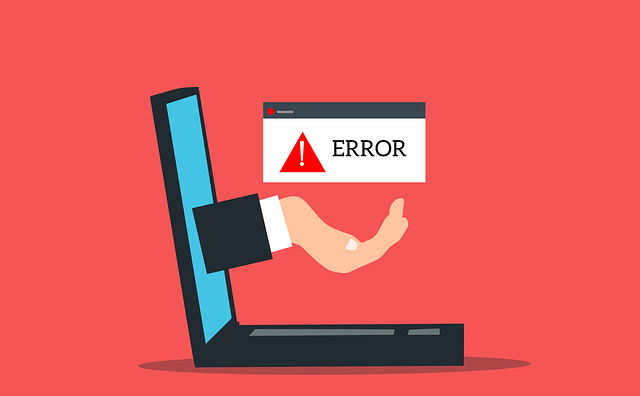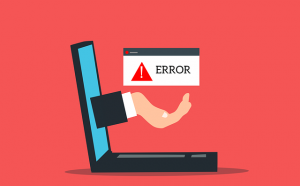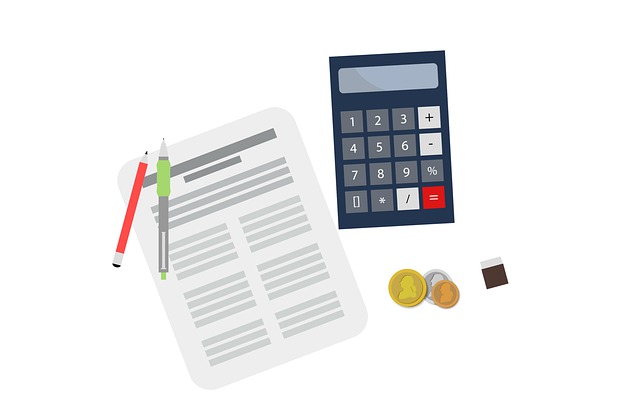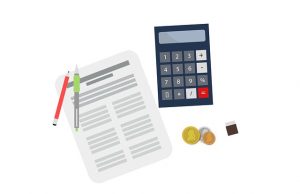
How to Avoid Accounting Errors With Your Small Business
 Allowing accounting errors to go unchecked can have a disastrous effect on your small business’s operations. It may hinder your business’s ability to secure loans or other forms of financing, or it can leave your business susceptible to tax audits. By following these tips, however, you can avoid accounting errors with your small business.
Allowing accounting errors to go unchecked can have a disastrous effect on your small business’s operations. It may hinder your business’s ability to secure loans or other forms of financing, or it can leave your business susceptible to tax audits. By following these tips, however, you can avoid accounting errors with your small business.
Stick With a Single Accounting Method
You can avoid accounting errors by sticking with a single accounting method. There are two primary accounting methods: cash basis and accrual. The cash basis method involves recording revenue transactions when you receive payment from customers and expense transactions when you pay vendors. The accrual method, on the other hand, involves recording transactions when they are incurred, such as when invoices are sent or bills are received.
Use QuickBooks
For greater protection against accounting errors, use QuickBooks. QuickBooks has become the preferred accounting solution for small businesses. Research shows that nearly 30 million small businesses use it to keep track of their financial transactions. It’s beginner friendly, scalable and loaded with helpful features. By using QuickBooks, your small business will be better protected against accounting errors.
Limit Access
Who can access your business’s accounting data? You may want to limit access to it. Allowing all of your small business’s employees to access its accounting data is a recipe for disaster. Some of them may make inaccurate entries that throw off your books. For cleaner records, you should consider limiting access to only accountants or other workers who need it.
Create Backups
Don’t underestimate the importance of creating backups. If you lose some or all of your business’s accounting data, you may be forced to start all over again from scratch — unless, of course, you have a backup copy. A backup copy will give you peace of mind knowing that your business’s accounting data is safe. Just remember to create backups regularly. You should also store the backup copies in multiple places, such as a cloud server and a local computer or machine.
Reconcile Accounts
Another tip to prevent accounting errors is to reconcile your business’s accounts. QuickBooks has a built-in reconciliation tool. You can use it to match your recorded transactions with those listed on your business’s credit card and bank statements. A process known as reconciliation, it will allow you to catch errors and discrepancies before they snowball into bigger problems.
Have anything else that you’d like to add? Let us know in the comments section below!

What Is Credit Utilization Ratio and How Does It Affect Your Business?
 What’s your business’s credit utilization ratio? Even if you know your business’s credit score, you might be unfamiliar with its credit utilization ratio. Nonetheless, if your business uses credit, it has a credit utilization ratio. It’s a credit-based financial metric that provides insight into how much credit your business uses. What is credit utilization ratio exactly, and how does it affect your business?
What’s your business’s credit utilization ratio? Even if you know your business’s credit score, you might be unfamiliar with its credit utilization ratio. Nonetheless, if your business uses credit, it has a credit utilization ratio. It’s a credit-based financial metric that provides insight into how much credit your business uses. What is credit utilization ratio exactly, and how does it affect your business?
Credit Utilization Ratio Explained
Credit utilization ratio represents the amount of credit your business is using relative to your business’s total available credit. It’s expressed as a percentage. A credit utilization ratio of 25% means your business is using one-quarter of its total available credit. If your business has $100,000 in total available credit — credit cards, lines of credit or other revolving credit accounts — and your business is currently using $25,000 on that available credit, its credit utilization ratio will be 25%.
How Credit Utilization Ratio Affects Your Business
Lenders may consider your business’s credit utilization ratio when determining its candidacy for a loan. A high credit utilization ratio can make it difficult to get approved for a business loan. A low credit utilization ratio, on the other hand, can increase your chances of getting approved for a business loan.
If your business’s credit utilization ratio is too high, you may have trouble paying for expenses. A high credit utilization ratio means less available credit to use. You can always use cash or other payment methods to cover the cost of expenses, but you may not be able to use credit.
Ways to Improve Your Business’s Credit Utilization Ratio
You can improve your business’s credit utilization ratio by using less credit. And when you do use credit to pay for goods or services, be sure to pay it off in a timely manner. Credit utilization ratio is based on revolving credit accounts. By paying down those revolving credit accounts, you’ll free up your business’s total available credit, thereby improving your business’s credit utilization ratio.
Another way to improve your business’s credit utilization ratio is to obtain but not use more credit. As your business’s total available credit increases, so will your business’s credit utilization ratio. Just remember not to use all of this credit. Credit utilization ratio represents the amount of credit your business is using relative to its total available credit. You can improve this metric by increasing your business’s total available credit and decreasing your business’s used credit.
Have anything else that you’d like to add? Let us know in the comments section below!

A Crash Course on Prepaid Expenses: What You Should Know
 Expenses are inevitable when running a business. Regardless of what products or services exactly your business sells, it will incur expenses. While all expenses are operational costs, there are different types of expenses, such as prepaid expenses.
Expenses are inevitable when running a business. Regardless of what products or services exactly your business sells, it will incur expenses. While all expenses are operational costs, there are different types of expenses, such as prepaid expenses.
Overview of Prepaid Expenses
Prepaid expenses are business-related expenses that are paid for in advance. If you pay for goods or services to use in your business’s operations but don’t receive those goods or services until a later date, you should record them as prepaid expenses. They are “prepaid” in the sense that you pay for them before you receive them.
Common examples of prepaid expenses include the following:
- Rent or lease payments
- Insurance
- Utilities
- Interest
How to Record Prepaid Expenses
How do you record prepaid expenses? Because they are paid for in advance, you’ll typically need to record them as current assets, followed by expenses. You can record them in a prepaid asset account on your business’s balance sheet. You can then reduce these asset accounts by making entries to expense accounts.
Unlike other expenses, prepaid expenses are recorded as current assets — at least initially. This is due to the fact that they are paid for in advance. Prepaid expenses involve business-related goods or services that are paid for in advance. You won’t receive them immediately when you pay for them. It make several days, weeks or even months until you receive them. And because they are paid for in advance, prepaid expenses are recorded as current assets. After the prepaid expenses have been realized, they are later recorded as expenses.
Prepaid vs Accrued Expenses
In addition to prepaid expenses, there are accrued expenses. Both prepaid and accrued expenses are business-related expenses, but don’t let that fool you into thinking they are the same. Prepaid and accrued are two different types of expenses.
Accrued expenses are essentially the opposite of their prepaid counterparts. Prepaid expenses involve paying for goods or services in advance, whereas accrued expenses involve paying for goods or services after you receive them.
In Conclusion
There are many different types of expenses. Prepaid expenses are expenses that are paid for in advance. Most rent and lease payments are considered prepaid expenses. If you rent or lease real property for your business, you’ll have to make those payments in advance. Therefore, they are considered prepaid expenses.
Have anything else that you’d like to add? Let us know in the comments section below!

Why Accounting Is Considered the Language of Business
 Accounting is often referred to as the language of business. It’s a label originally given by Warren Buffet. In 2014, the famous investor and philanthropist was doing a news segment with CNBC. During the segment, Buffet advised a caller to study accounting while coining it the language of business. Other people have since jumped on the bandwagon by referring to accounting as the language of business.
Accounting is often referred to as the language of business. It’s a label originally given by Warren Buffet. In 2014, the famous investor and philanthropist was doing a news segment with CNBC. During the segment, Buffet advised a caller to study accounting while coining it the language of business. Other people have since jumped on the bandwagon by referring to accounting as the language of business.
All Businesses Need It
Regardless of what they sell, all businesses need accounting. It provides insight into their finances, including their revenue and expenses. Without accounting, businesses will struggle to achieve their financial goals. Whether a business operates in the business-to-consumer (B2C) or business-to-business (B2B) industry, it will need accounting. The universal need for accounting is one of the reasons why it’s considered the language of business.
It Paints a Picture
Accounting paints a picture of a business’s financial health. Statistics show that over half of all new small businesses opened in the United States will fail within their first years. While small businesses can fail for different reasons, poor financial health is often the leading cause. Businesses that aren’t profitable won’t be able to sustain their operations — at least for any extended period. They may be able to borrow money by obtaining loans or other forms of debt financing, but they’ll eventually be forced to close their doors. With accounting, businesses will have a better understanding of their financial health.
It Has Its Own Terms
Another reason accounting is considered the language of business is because it has its own terms. The term “balance sheet,” for instance, refers to a report that lists a business’s assets, liabilities and shareholder equity. The term “cost of goods sold,” on the other hand, refers to all direct expenses associated with the production of goods or services sold by a business. There are dozens of accounting terms. All languages have their own terms. And accounting has its own terms, so it’s considered the language of business.
It’s Structured
Accounting is structured. It consists of specific rules that businesses must follow when tracking and recording their financial transactions. Many businesses use the Generally Accepted Accounting principles (GAAP). Originally adopted by the U.S. Securities and Exchange Commission (SEC), it’s become synonymous with accounting. The GAAP consists of rules that, when used by businesses, provide structure.
Have anything else that you’d like to add? Let us know in the comments section below!

Does Asset Depreciation Affect Cash Flow? Here’s What You Should Know
 Depreciation is inevitable when running a business. While some of your business’s assets may increase in value, others may decrease in value. The latter is known as depreciation. Whether it’s a machine, vehicle, real property or any other asset purchased by your business, its value may decrease.
Depreciation is inevitable when running a business. While some of your business’s assets may increase in value, others may decrease in value. The latter is known as depreciation. Whether it’s a machine, vehicle, real property or any other asset purchased by your business, its value may decrease.
In accounting, depreciation is recorded as an expense. You can write off the depreciation of an asset so that it lowers your business’s tax liabilities. Doing so essentially allows you to allocate the asset’s original cost over time. Once the asset is no longer useful for your business, its value will be zero. You can use depreciation to slowly achieve this zero value. You might be wondering, however, if depreciation will affect your business’s cash flow.
Cash Flow Explained
Cash flow is a business’s net cash for a given period. All businesses make money, and all businesses spend money. The difference between this incoming and outgoing money is cash flow. Cash flow is a financial metric for incoming and outgoing money.
If your business makes more money than what it spends, your business will have a positive cash flow. If your business spends more money than that it makes, on the other hand, your business will have a negative cash flow.
Depreciation Doesn’t Directly Affect Cash Flow
Depreciation may affect your business’s taxes, but it won’t affect your business’s cash flow. Cash flow is a measurement of how much cash flows into and out of your business. Depreciation is the loss of value involving a fixed asset. When a fixed asset becomes less valuable, it will depreciate.
In accounting, depreciation is classified as a non-cash expense. There are cash expenses, and there are non-cash expenses. Cash expenses include goods and services that your business paid for. Non-cash expenses include things like depreciation and amortization.
Depreciation Still Affects Taxes
While it doesn’t directly affect cash flow, depreciation still affects taxes. Like other expenses, it’s tax-deductible. You can write off depreciation to lower your business’s tax liabilities.
The greater the loss of value with a given asset, the more money your business will save on its tax liabilities. Depreciation won’t affect the money coming into your business, nor will affect the money leaving or going out of your business. But it can still affect your business’s tax liabilities.
What are your thoughts on depreciation and cash flow? Let us know in the comments section below!
S Corp vs C Corp: What’s the Difference?
![]() The U.S. Internal Revenue Service (IRS) recognizes several types of business entities. In addition to sole proprietorships and limited liability companies (LLCs), there are S corps and C corps. You can structure your business as either an S corp or C corp. While they are both corporation-based entities, though, they aren’t the same. What is an S corp and C corp exactly, and how do these entities differ?
The U.S. Internal Revenue Service (IRS) recognizes several types of business entities. In addition to sole proprietorships and limited liability companies (LLCs), there are S corps and C corps. You can structure your business as either an S corp or C corp. While they are both corporation-based entities, though, they aren’t the same. What is an S corp and C corp exactly, and how do these entities differ?
What Is an S Corp?
An S corp is a corporation-based entity that passes its income to its shareholders. All corporation-based entities have shareholders. Whether you want to start an S corp or C corp, you’ll have to jump through the hoops of issuing stock and holding shareholder meetings. You don’t have to necessarily list your business on the stock market. Rather, you just need to have shareholders — even if your business is privately traded. S corps are pass-through entities, meaning shareholders are responsible for paying taxes on their business’s gains or losses.
What Is a C Corp?
A C corp is a corporation-based entity that doesn’t pass its income to its shareholders. C corps still have shareholders, and they must perform many of the same stock-related tasks as their S corp counterparts. But C corps themselves must pay taxes. C corps aren’t pass-through entities. Their shareholders must pay taxes on dividends, and the C corps themselves must pay taxes on their income.
Differences Between S Corps and C Corps
The main difference between S corps and C corps is that the former is a pass-through entity, whereas the latter is not. S corps are classified as pass-through entities because their taxes are passed down to their shareholders. C corps use a different form of taxation known as double taxation. With double taxation, both the shareholders and the C corps themselves pay taxes.
Another difference between S corps and C corps involves stock. S corps only have a single class of stock. C corps, in comparison, support multiple types of stock. If you operate a C corp, you can create different classes of stock with different levels of voting rights for shareholders.
S corps are more common than C corps among small businesses. Only businesses with more than 100 shareholders are eligible for the C corp status. S corps, in comparison, are limited to 100 shareholders. Since small businesses typically have fewer shareholders, most of them operate as an S corp, instead.
Have anything else that you’d like to add? Let us know in the comments section below!

4 Reasons to Consider Using Fiscal Year Accounting
 If you currently use calendar years for accounting, you might be wondering whether switching to fiscal years is worth it. Calendar years and fiscal years both consist of 365 days. Calendar years simply begin on January 1 and end on December 31. Fiscal years, on the other hand, can begin on any day of the year and end 12 months later. A fiscal year can end during any month except for December. The U.S. Internal Revenue Service (IRS) doesn’t allow businesses to use fiscal years that end in December. When should you consider using fiscal years for accounting exactly?
If you currently use calendar years for accounting, you might be wondering whether switching to fiscal years is worth it. Calendar years and fiscal years both consist of 365 days. Calendar years simply begin on January 1 and end on December 31. Fiscal years, on the other hand, can begin on any day of the year and end 12 months later. A fiscal year can end during any month except for December. The U.S. Internal Revenue Service (IRS) doesn’t allow businesses to use fiscal years that end in December. When should you consider using fiscal years for accounting exactly?
#1) Seasonal Sales
Businesses that generate seasonal sales often use fiscal years for accounting. From commercial landscaping and pressure washing to pool installation and more, countless businesses generate seasonal sales. Seasonal sales means most if not all of their sales occur during a specific time of year, such as the summer or winter. If your business falls under this category, you may want to use fiscal years for accounting. You can specify your own 12-month accounting period.
#2) Alleviate Taxes
You should consider using fiscal years for accounting to alleviate taxes. While some businesses incur major expenses in December, others incur major expenses during the beginning of a calendar year. In other words, they buy goods and services from vendors at the beginning of the year. Using fiscal years for accounting will allow you to claim these expenses on your business’s taxes. You can receive deductions for expenses — even if those expenses occurred in January or February.
#3) Smoother Tax Filings
Another reason to consider using fiscal years for accounting is smoother tax filings. April is a busy time of year for the IRS. It receives and processes millions of tax filings during this month. If you use calendar years for accounting, you’ll have to submit your business’s taxes by the April due date. Switching to fiscal years, though, will allow you to choose a different month. And by doing so, you can expect a faster, smoother filing process.
#4) Save Money on Professional Accounting and Tax Services
You may even save money on professional accounting and tax services by switching to fiscal years. Professional accountants may charge less for their services during the slow months of the year. Since most businesses, as well as people, use calendar years, April is typically their busiest month. Using calendar years means you’ll have to file your business’s taxes by the due date in April. Fiscal years, though, will allow you to choose a different 12-month period. As a result, you may save money on professional accounting and tax services.
What are your thoughts on fiscal year accounting? Let us know in the comments section below!

A Crash Course on Cost Basis: What You Should Know
 If you purchase assets for investment purposes, you’ll need to track your cost basis. The Internal Revenue Service (IRS) uses this information to determine tax liabilities. After selling a given asset, you’ll have to report your cost basis for that asset on your taxes. By properly tracking, as well as reporting your cost basis, you can rest assured knowing that you are filing your taxes correctly.
If you purchase assets for investment purposes, you’ll need to track your cost basis. The Internal Revenue Service (IRS) uses this information to determine tax liabilities. After selling a given asset, you’ll have to report your cost basis for that asset on your taxes. By properly tracking, as well as reporting your cost basis, you can rest assured knowing that you are filing your taxes correctly.
What Is Cost Basis?
The term “cost basis” refers to the original purchase price of an asset. It’s used to calculate capital gains and capital losses (see below).
Assets are items of monetary value. They can include tangible items like real estate and equipment, and they can include intangible items like stocks and bonds. The value of an asset, however, may change over time. Assets typically don’t retain their original value indefinitely. Some of them will appreciate, whereas others will depreciate. Regardless, the cost basis of an asset is the original purchase price. It represents the price you paid to acquire the asset.
Cost Basis and Capital Grains vs Losses
The IRS requires taxpayers to report their cost basis after selling assets. When you sell an asset, you’ll either incur a capital gain or a capital loss. Capital gains occur when you sell an asset for a higher price than that for which you purchased it. Capital losses, on the other and, occur when you sell an asset for a lower price than that for which you purchased it. The IRS calculates capital gains and capital losses using the reported cost basis of assets. The difference between the sale price of an asset and the cost basis of the asset will determine capital gains or capital losses.
With capital gains, you’ll incur tax liabilities. There are short-term and long-term capital gains. Short-term capital gains involve assets that are held for less than one year. Long-term capital gains involve assets that are held for longer than one year. Tax rates vary depending on income, but short-term capital gains always come with higher tax liabilities than long-term capital gains.
In Conclusion
Selling an asset is considered a taxable event. And like other taxable events, you’ll have to report it to the IRS. When filing your taxes for the year in which you sold the asset, you’ll need to report your cost basis. It’s essentially the original purchase price of the asset, and it will determine your capital gains or capital losses.
Have anything else that you’d like to add? Let us know in the comments section below!

Financial Accounting vs Auditing: What’s the Difference?
 Think accounting is the same as auditing? Think again. While they both involve the analysis of a business’s financial transactions, they aren’t the same. Accounting and auditing are two different financial processes, each of which works in a different way
Think accounting is the same as auditing? Think again. While they both involve the analysis of a business’s financial transactions, they aren’t the same. Accounting and auditing are two different financial processes, each of which works in a different way
What Is Accounting?
Accounting is the process of documenting and recording financial transactions associated with a business. Businesses make money, and they spend money. They make money primarily by selling products or services to their target audience. And businesses spend money on payroll, equipment, inventory, insurance and other expenses so that they can perform these sales operations.
Businesses must track both credit- and debit-based financial transactions. By tracking their financial transactions, they can prepare their taxes, cut costs and, ultimately, maximize their profits. This is where accounting comes into play. Accounting allows businesses to track their financial transactions using a set of formal guidelines or accounting principles.
What Is Auditing?
Auditing is the process of evaluating financial transactions, as well as accounting documents, for errors. Most businesses use generally accepted accounting principles (GAAP) when performing accounting. To ensure that their accounting documents comply with the GAAP, businesses may conduct an audit. They can audit their accounting documents while checking for errors such as unrecorded liabilities or unrecorded asset depreciation.
Reconciliation is an auditing process. Available in QuickBooks – as well as other accounting software products – it involves checking the transactions on a bank statement to those recorded in the accounting software. Each transaction should be listed on the appropriate bank statement and in the accounting software.
Differences Between Accounting and Auditing
Accounting and auditing aren’t the same. Accounting revolves around documenting and recording financial transactions. Auditing, on the other hand, revolves around checking financial transactions and accounting documents for errors.
Accounting and auditing also have different goals. The primary goal of accounting is to record all of a business’s financial transactions while following a set of guidelines or principles, such as the GAAP. The primary goal of auditing, conversely, is to check the accuracy of financial transactions and accounting documents.
Businesses may perform accounting and auditing either in-house, or they may outsource it. Regardless, accounting and auditing are essential financial processes. They are necessary for nearly all businesses. Accounting is all about documenting and recording financial transactions, whereas auditing is all about checking financial transactions and accounting documents for errors. They are different businesses-related financial processes.
What are your thoughts on accounting and financing? Let us know in the comments section below!

What Is Activity-Based Costing in Accounting?

Tracking expenses is an essential part of accounting. You’ll need to know how much money your business spends on various goods and services so that you can deduct them from your taxes. Rather than grouping all of your businesses together, though, you may want to use activity-based costing. Activity-based costing will provide deeper insight into your business’s expenses by allowing you to assign them to activities.
The Basics of Activity-Based Costing
Activity-based costing is the process of assigning expense costs – specifically overhead-related expenses – to activities. It’s commonly used in the manufacturing industry. Manufacturing companies in the United States and abroad often prefer activity-based costing. With activity-based costing, they can assign their overhead expenses to activities. As a result, they can closely track their expenses.
How Activity-Based Costing Works
Activity-based costing revolves around activities. What are activities exactly? In accounting, an activity is any action for which your business incurs an expense. Purchasing new equipment can be considered an activity. Fulfilling a customer’s purchase order can also be considered an activity.
Benefits of Activity-Based Costing
It may sound confusing, but activity-based costing is relatively simple; you just need to assign expenses to activities. Some expenses may have a single activity, whereas others may have multiple activities Activity-based costing involves the assignment of expenses to activities.
You can use activity-based costing to improve your business’s cash flow. If your business operates in the manufacturing industry, it may suffer from a poor cash flow if it produces a surplus of products. If your business produces more products than what it sells, for example, its cash flow will suffer. Activity-based costing can help you improve your business’s cash flow by revealing the activities associated with your business’s production process.
With activity-based costing, you can break down your business’s expenses into the following categories: fixed expenses, variable expenses and overhead expenses.
Another benefit of activity-based costing is product pricing. You’ll have an easier time setting the right price points for your business’s products if you use activity-based costing. You can evaluate the activities associated with your business’s production process. With this information, you can create the perfect price points that allow for maximum profitability while keeping your business’s expenses in check.
Not all businesses use activity-based costing. Nonetheless, it offers several benefits. Activity-based costing is simple, can improve your business’s cash flow, provides insight into expenses and can help with product pricing.
Have anything else that you’d like to add? Let us know in the comments section below!
